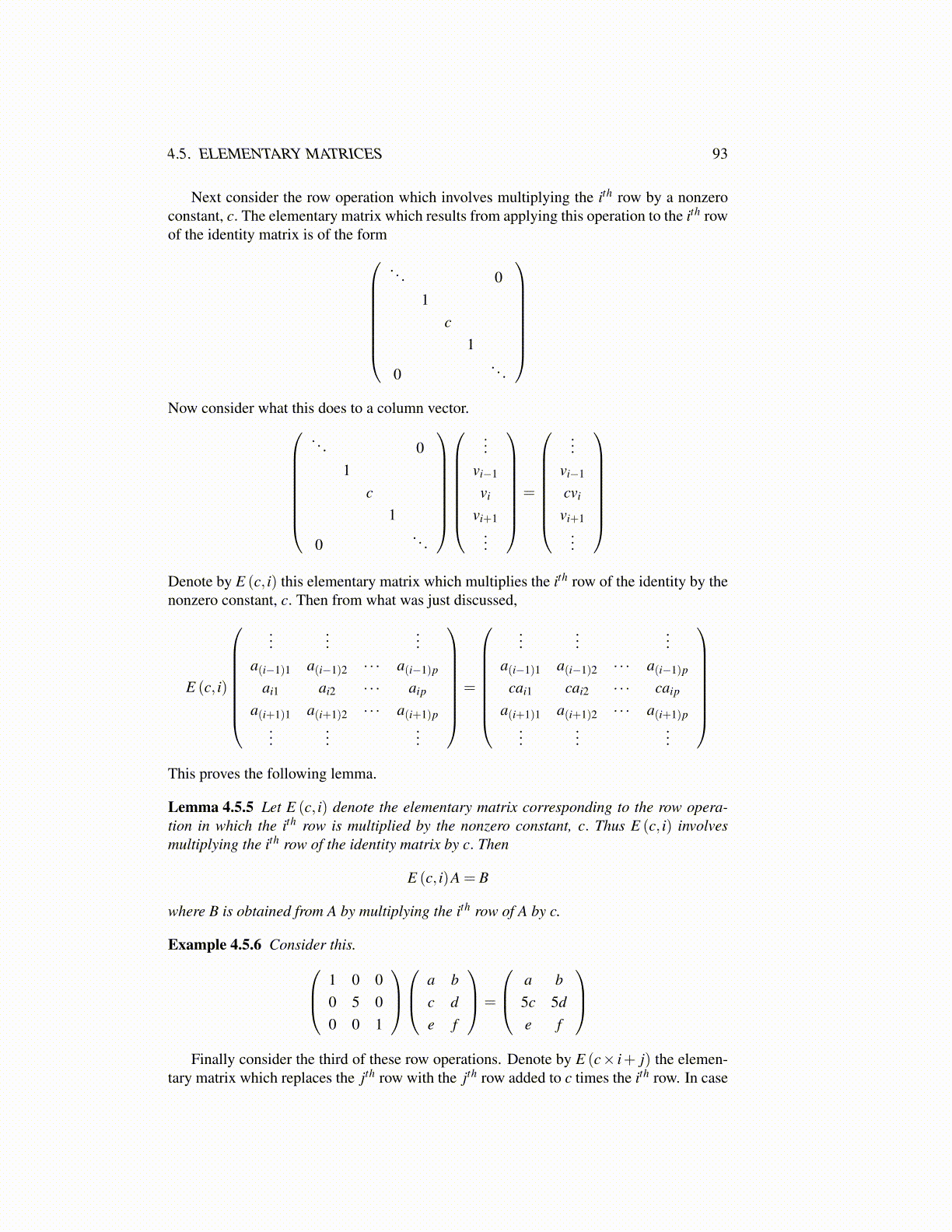
4.5. ELEMENTARY MATRICES 93
Next consider the row operation which involves multiplying the ith row by a nonzeroconstant, c. The elementary matrix which results from applying this operation to the ith rowof the identity matrix is of the form
. . . 01
c1
0. . .
Now consider what this does to a column vector.
. . . 01
c1
0. . .
...vi−1
vi
vi+1...
=
...vi−1
cvi
vi+1...
Denote by E (c, i) this elementary matrix which multiplies the ith row of the identity by thenonzero constant, c. Then from what was just discussed,
E (c, i)
......
...a(i−1)1 a(i−1)2 · · · a(i−1)p
ai1 ai2 · · · aip
a(i+1)1 a(i+1)2 · · · a(i+1)p...
......
=
......
...a(i−1)1 a(i−1)2 · · · a(i−1)p
cai1 cai2 · · · caip
a(i+1)1 a(i+1)2 · · · a(i+1)p...
......
This proves the following lemma.
Lemma 4.5.5 Let E (c, i) denote the elementary matrix corresponding to the row opera-tion in which the ith row is multiplied by the nonzero constant, c. Thus E (c, i) involvesmultiplying the ith row of the identity matrix by c. Then
E (c, i)A = B
where B is obtained from A by multiplying the ith row of A by c.
Example 4.5.6 Consider this. 1 0 00 5 00 0 1
a b
c de f
=
a b5c 5de f
Finally consider the third of these row operations. Denote by E (c× i+ j) the elemen-
tary matrix which replaces the jth row with the jth row added to c times the ith row. In case